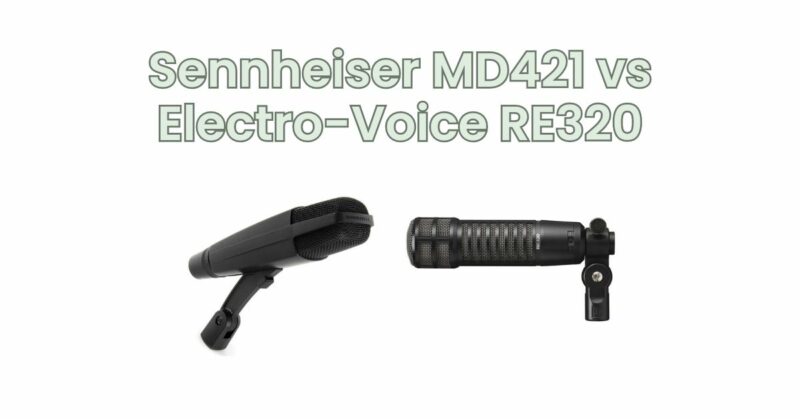Dynamic microphones are widely used in live sound reinforcement, broadcasting, and studio recording applications. The Sennheiser MD421 and the Electro-Voice RE320 are two popular choices known for their versatility and reliable performance. In this article, we will compare the Sennheiser MD421 and the Electro-Voice RE320, exploring their features, sound characteristics, and applications to help you make an informed decision when choosing a dynamic microphone.
- Sennheiser MD421:
- Electro-Voice RE320:
Sennheiser MD421 Overview: The Sennheiser MD421 is a legendary dynamic microphone known for its versatility and durability. It features a cardioid polar pattern, providing good off-axis rejection and focusing on the sound source. The MD421 offers a wide frequency response range and a high SPL handling capability, making it suitable for a variety of instruments and vocals. It is often used for drums, guitar cabinets, vocals, and brass instruments.
Electro-Voice RE320 Overview: The Electro-Voice RE320 is a dynamic microphone designed to deliver exceptional sound quality and versatility. It features a variable-D polar pattern, which maintains consistent frequency response and off-axis rejection regardless of the microphone’s position. The RE320 offers a balanced and detailed sound with extended low-frequency response, making it suitable for vocals, instruments, and broadcasting applications.
Sound Characteristics: The Sennheiser MD421 provides a clear and balanced sound with a slight emphasis in the midrange. It captures instruments and vocals with accuracy and warmth, offering a versatile sonic character. The MD421 handles high sound pressure levels well, allowing it to capture loud instruments without distortion.
The Electro-Voice RE320 offers a smooth and natural sound reproduction with a slight boost in the low frequencies. It provides excellent clarity and definition, making it ideal for capturing vocals and instruments with precision. The RE320’s extended low-frequency response enhances the depth and impact of recordings.
Build Quality and Design: The Sennheiser MD421 is built to withstand the demands of professional use, featuring a robust metal construction. It has a rugged design and includes a built-in pop filter to minimize plosive sounds and wind noise. The MD421 also features a five-position bass roll-off switch, allowing users to adjust the microphone’s low-frequency response according to the recording environment.
The Electro-Voice RE320 boasts a durable and roadworthy construction, ensuring reliability in various applications. It features an internal shock mount that effectively reduces handling noise and vibrations. The RE320 also includes a humbucking coil that helps eliminate electromagnetic interference.
Applications and Versatility: Both microphones excel in capturing a wide range of instruments and vocals, making them suitable for various recording and live sound scenarios. The Sennheiser MD421 is commonly used for drums, guitar cabinets, brass instruments, and vocals in both studio and live settings. The Electro-Voice RE320 is versatile enough to handle vocals, guitars, bass instruments, and broadcasting applications with clarity and detail.
Price and Value: The Sennheiser MD421 is typically priced higher than the Electro-Voice RE320, reflecting its reputation as a premium microphone brand. However, both microphones offer excellent value for their respective price points, delivering professional-level sound quality and durability.
The Sennheiser MD421 and the Electro-Voice RE320 are both renowned dynamic microphones that provide versatile and reliable performance. The MD421 offers a balanced and warm sound, making it a popular choice for a wide range of instruments and vocals. The RE320 delivers a natural and detailed sound with extended low-frequency response, making it suitable for various recording and broadcasting applications. Consider your specific recording needs, budget, and sound preferences to determine which microphone best suits your requirements. Both microphones are trusted options that will help you capture professional-quality audio in a variety of settings.


